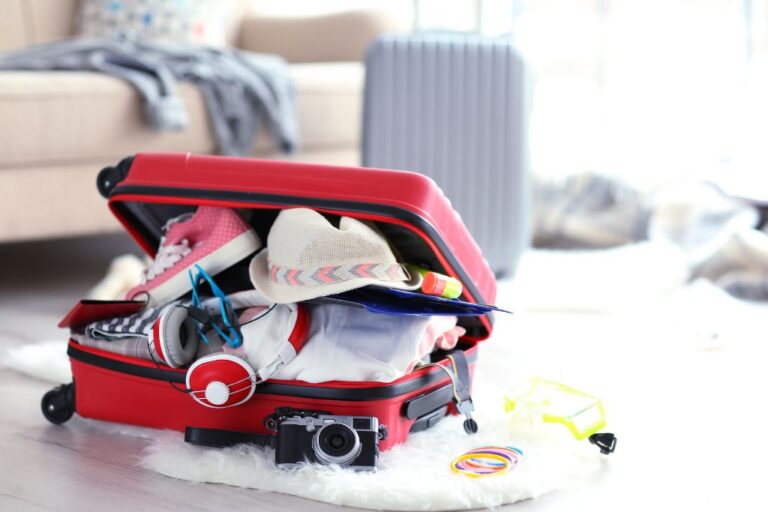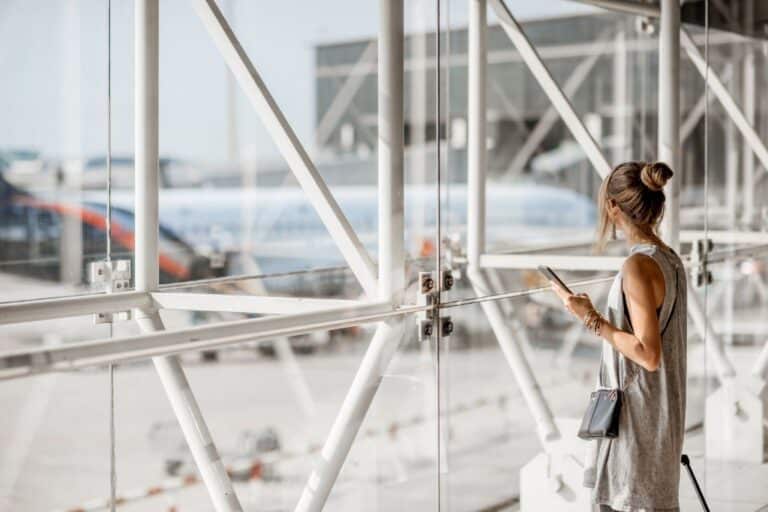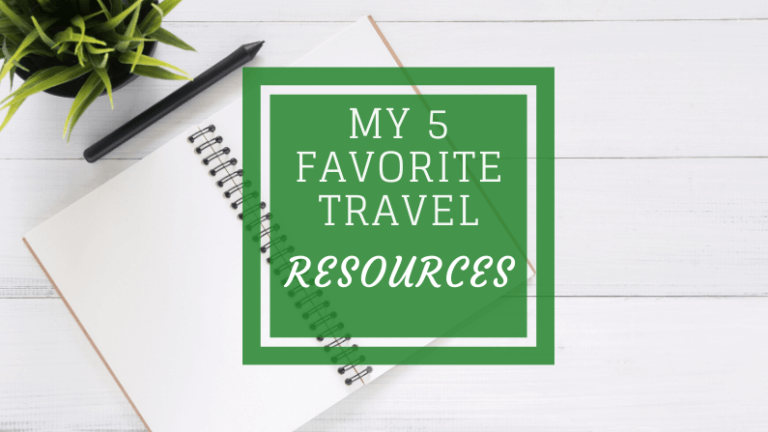Sleep Like A Pro At 35,000 Feet: 7 Game-Changing Tips For Long Flights


Have You Booked A Long Flight But Are Not Sure How To Get Some Rest While In The Air? Keep Reading To Find Out!
So, what are some pro tips for sleeping on long-haul flights?
Let’s be real—sleeping on a plane can feel like trying to nap inside a noisy sardine can with stiff seats and endless interruptions.
Whether you’re facing a long-haul red-eye or just hoping to catch a few zzz’s before landing, getting quality rest in the air feels almost impossible… but it doesn’t have to be.
After years of international flights, awkward neck angles, and failed attempts at mid-air naps, I’ve rounded up 7 clever, traveler-approved tips that actually work.
From seat hacks and packing essentials to calming rituals and smart sleep prep, these strategies can make the difference between arriving groggy or feeling refreshed and ready to explore.
Ready to snooze your way through your next flight like a pro? Let’s dive in.
Recommended Resources:
✈️ Cheapest Flights
🏢 Hotels
🚘 Car Rental
🚖 Airport Taxi Transfer
🩹 Travel Insurance
💧 Water Bottle
1. Choose The Right Seat
Your seat can make or break your in-flight sleep.
If you’re hoping to rest, always go for the window seat.
It gives you something to lean against, keeps you away from the aisle (and wandering elbows or drink carts), and lets you control the window shade for light and temperature.
When booking, look at seat maps on tools like SeatGuru or the airline’s app to avoid seats near bathrooms, galleys, or bulkheads—these areas tend to be noisy and busy.
Bulkheads are the walls that divide the cabin into different areas or sections. Such as the walls that separate different classes of seating (ex. economy and business class).
Also, seats near the wing are often the most stable during turbulence, which makes it easier to relax and doze off.
If you’re flying overnight or long-haul, consider paying a little extra for an upgrade.
Such as Premium Economy or Economy Plus, which often give you extra legroom, a deeper recline, and more overall comfort.
Traveling as a couple? Try booking the window and aisle seat in a three-seat row—if the flight isn’t full, that middle seat might stay empty, giving you more room to stretch out.
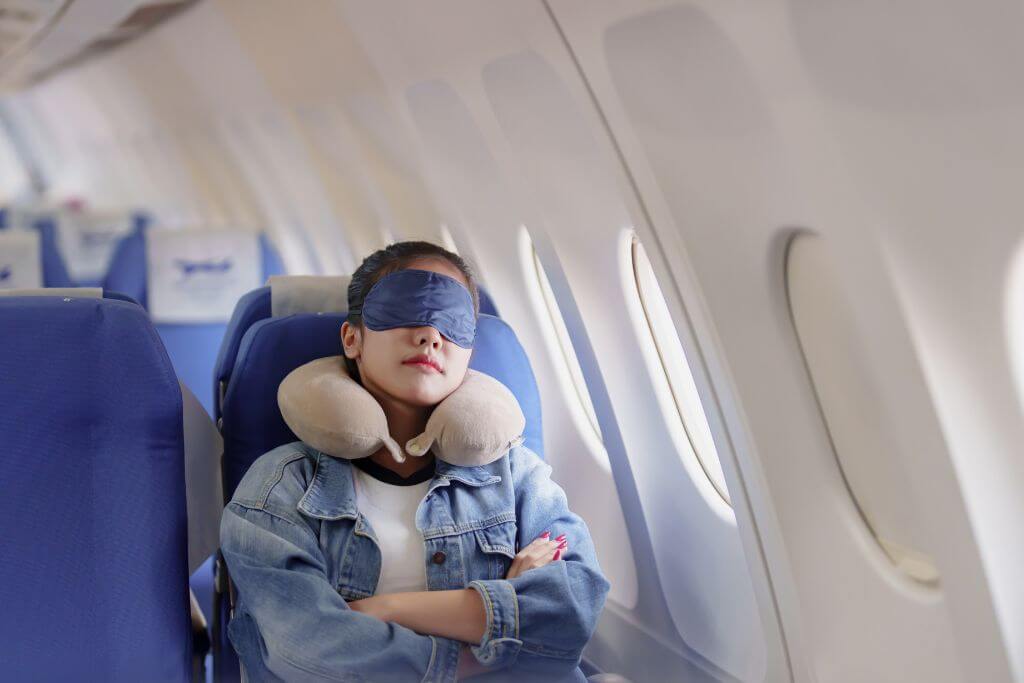
2. Pack Sleep Essentials
Having the right sleep essentials can make a huge difference.
Start with a high-quality neck pillow.
Skip the cheap, floppy ones you find at the airport and go for something ergonomic. Such as memory foam or inflatable options with built-in chin support are ideal.
They keep your head from bobbing around and reduce neck strain, which is often the biggest culprit behind mid-air discomfort.
Next, you’ll want a good sleep mask to block out cabin lights, reading lights, or sunshine if you’re flying during the day.
Look for one that’s contoured or padded so it doesn’t press against your eyes.
For noise control, noise-cancelling headphones are a game-changer, especially for long flights.
They muffle engine hum and background chatter, and let you play white noise, calming music, or sleep meditations.
If headphones are bulky, earplugs can be just as effective—especially the soft, moldable kind made for sleeping.
Don’t forget something cozy, like a travel blanket, oversized scarf, or even a lightweight hoodie.
Airplane cabins are often colder than expected, and staying warm helps your body relax.
Bonus Tip: Pack these items in a small, easy-to-reach pouch in your carry-on so you’re not rummaging around while everyone’s settling in.
Having your sleep kit ready to go means you can slip into rest mode as soon as possible.
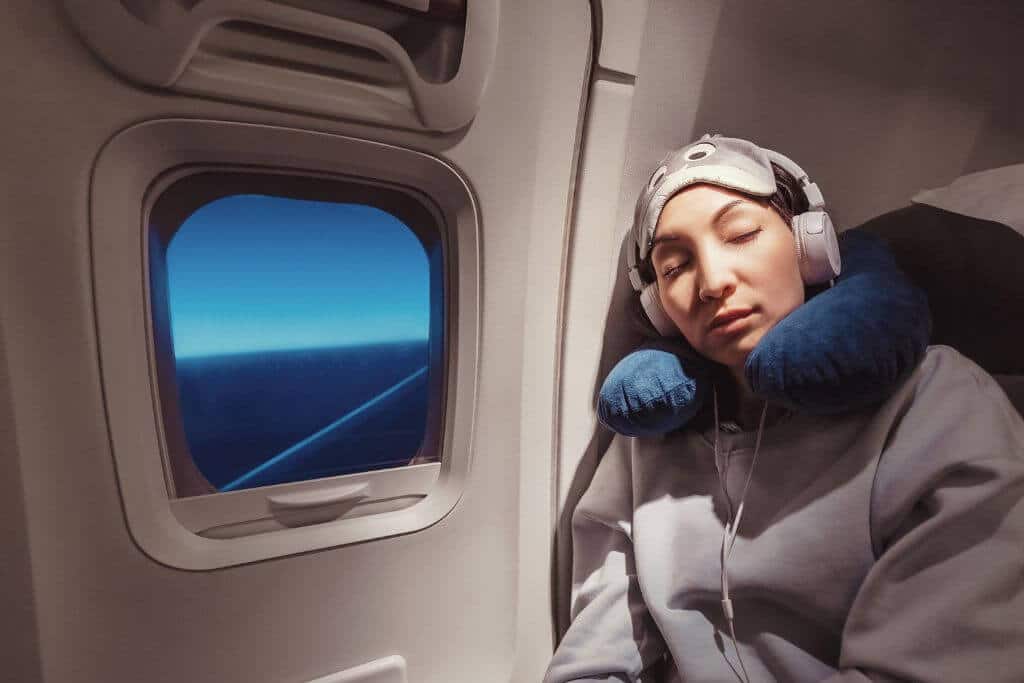
3. Stay Hydrated And Choose Your In-Flight Snacks Wisely
If you want to sleep soundly on a plane, what you put in your body matters just as much as how you position it.
Airplane cabins are notoriously dry, and dehydration can leave you feeling groggy, cramped, and more prone to headaches—none of which are sleep-friendly.
Start by drinking plenty of water before and during your flight.
A good rule of thumb is about 8 ounces (250ml) of water for every hour you’re in the air.
Bring a refillable water bottle with you and top it up after security—flight attendants will also happily refill it for you onboard.
Try to avoid chugging it all at once, though. Sipping steadily throughout the flight helps your body absorb it better and keeps those bathroom breaks manageable.
As for food, skip the heavy, greasy meals that can upset your stomach or make you feel sluggish.
Instead, aim for light, balanced snacks that keep your energy stable and digestion happy.
Think bananas, almonds, whole grain crackers, or a small sandwich—something filling but not bloating.
Bonus Tip: Some foods naturally promote sleep!
Tryptophan-rich snacks like turkey, oats, and nuts may help increase melatonin production in your body, giving you a subtle nudge toward sleepiness.
Pair that with a calming herbal tea (like chamomile or ginger), and you’ve got a travel-friendly version of bedtime comfort food.
Steering clear of caffeine, processed snacks, and sugary treats can also help your body relax, regulate its rhythms, and ultimately fall asleep faster in flight.
👉 If you prefer drinking water through a filter, grab your LARQ Bottle. The Nano Zero Filter technology removes lead, heavy metals, chlorine, microplastics, and other particulates in the water.

4. Avoid Caffeine And Alcohol
When you’re tired and heading into a long flight, it might be tempting to grab a coffee at the gate or accept that free glass of wine in-flight.
But if your goal is to sleep well on the plane, caffeine and alcohol are not your friends.
Caffeine is a stimulant that can stay in your system for up to 6 hours (or more).
Even if you do manage to fall asleep after a cup, your sleep will be lighter and more fragmented.
Try to skip it for at least 4–6 hours before your flight, especially if you’re flying overnight or planning to nap onboard.
As for alcohol, it might feel like it helps you doze off—and it can—but the sleep you get after drinking is usually poor quality.
Alcohol can cause you to wake up more often, dehydrate you, and amplify jet lag symptoms.
Plus, drinking in the dry air of an airplane cabin can leave you feeling groggy, puffy, and more exhausted when you land.
Instead, stick to hydrating with water throughout your flight.
If you’re craving something warm and comforting, ask for herbal tea like chamomile or peppermint, which can actually help you relax.
Bonus Tip: Bringing your own tea bags is a savvy trick since flight attendants usually have hot water on hand.

5. Dress Comfy And In Layers
When it comes to sleeping on a plane, what you wear matters more than you think.
Airplanes are notorious for unpredictable cabin temperatures, and comfort is key if you want to relax enough to drift off.
Start with soft, breathable fabrics.
Think joggers or leggings instead of jeans, and a loose t-shirt or sweatshirt over a tank or tee (that is literally my go-to attire).
Avoid anything tight, scratchy, or restrictive, especially around your waist or ankles. Remember, you’ll be sitting (and hopefully sleeping) for hours.
Layers are your best friend. In addition, bring a light jacket, hoodie, or oversized scarf you can snuggle up in.
These not only keep you warm but can double as a pillow or makeshift blanket if needed.
Skip the fancy shoes—easy slip-ons or comfy sneakers are ideal for getting through security quickly and letting your feet breathe on board.
And don’t forget a pair of cozy socks if you plan on kicking your shoes off.
Your feet tend to swell at high altitude, and socks help keep your toes warm and your circulation flowing.
Finally, avoid accessories that dig in—bulky jewelry, belts, or tight bras can all become uncomfortable over time.
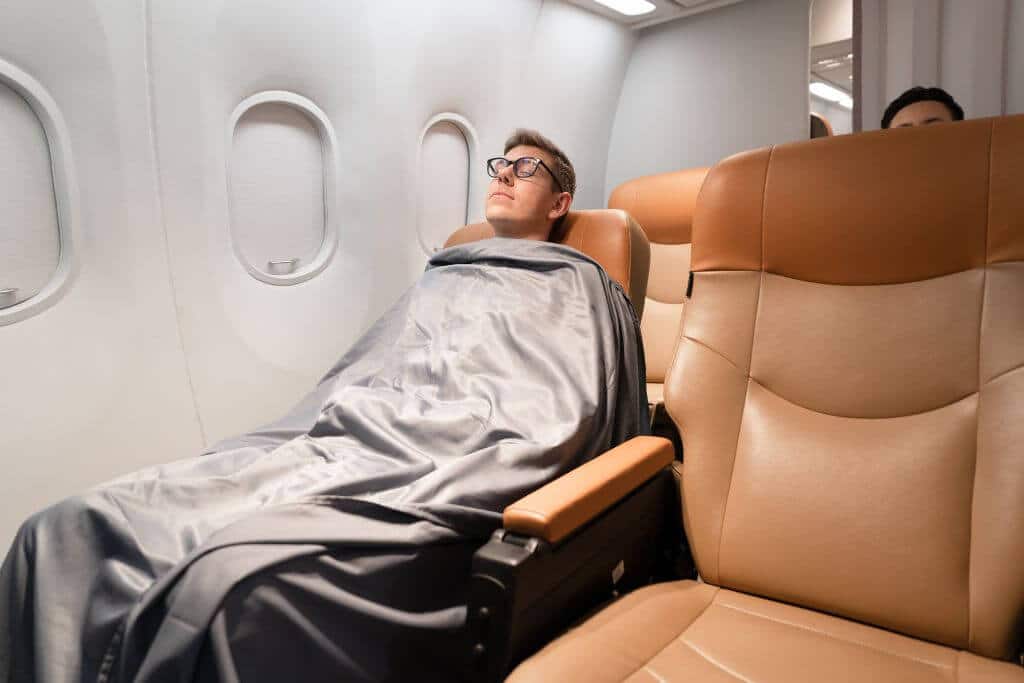
6. Relax Your Body And Mind
Even if your seat is perfect and you’ve packed all the right sleep gear, your mind can still be your biggest obstacle to falling asleep on a plane.
That’s why it’s so important to intentionally unwind—both mentally and physically—before you try to sleep.
Start with your breathing. A few minutes of deep, slow breaths can signal to your nervous system that it’s time to relax.
Try inhaling for 4 counts, holding for 4, exhaling for 4, and pausing for another 4 (this is known as “box breathing”).
It sounds simple, but it works wonders, especially in a stressful or noisy environment.
Next, think about body relaxation techniques.
You can do a quick progressive muscle relaxation—just tense and release each muscle group from your toes to your forehead.
This helps release tension you may not even realize you’re holding, which makes your body feel more ready for sleep.
If your mind is racing, try listening to a sleep meditation, calming podcast, or white noise.
Apps like Calm, Headspace, or Insight Timer offer specific guided meditations designed for travel or sleep.
Also, don’t overlook the power of screens off. The blue light from your phone or tablet messes with melatonin production, making it harder to sleep.
If you do use a screen before bed, consider blue light filters or “night mode”. Alternatively, switch to audio-only content when you’re ready to wind down.
And finally, give yourself permission to rest. So many travellers feel pressure to watch every movie or “make the most” of the flight (this is me).
But if sleep is your priority, let go of distractions and just focus on getting as comfortable as you can.
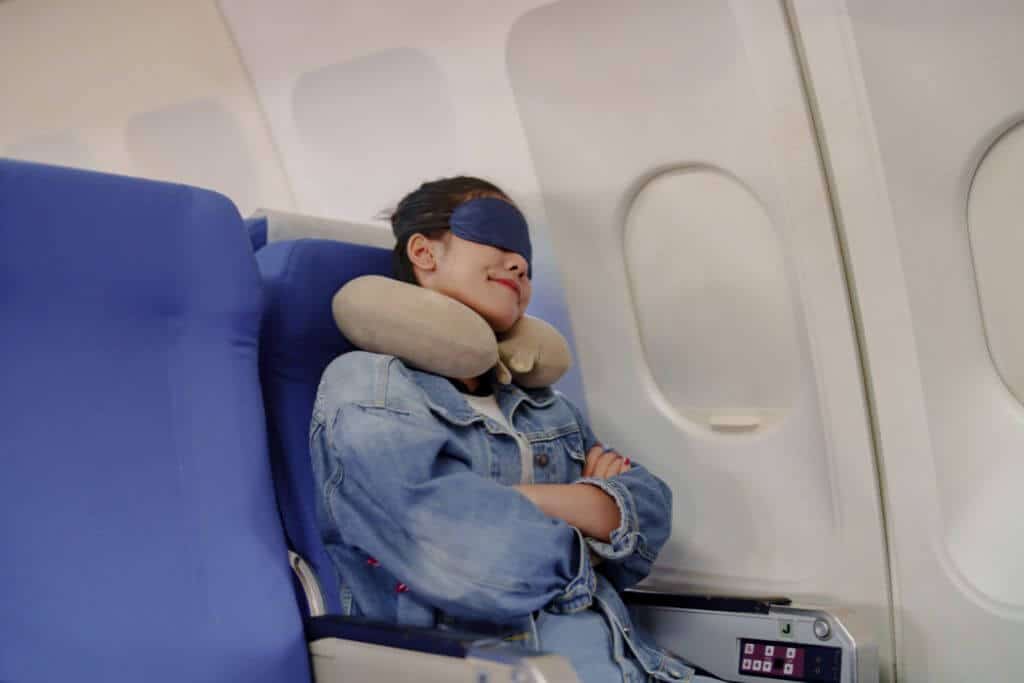
7. Set Boundaries For Sleep Time
It might sound funny to “set boundaries” on a plane—but if you want real rest mid-flight, you’ve got to create space for it, both physically and socially.
Planes aren’t designed for ideal sleep environments. However, it’s up to you to gently signal to the world (and yourself) that it’s time to wind down.
Start by creating a clear sleep window. Decide when you’re going to try to sleep and prep for it just like you would at home.
Grab your sleep essentials, turn off notifications, dim your screen, and put on your eye mask and headphones.
These cues tell your brain it’s time to rest—even if you’re sitting upright in 26B.
Next, use a bit of body language to help others catch the hint.
Wearing a sleep mask, reclining your seat slightly, and avoiding eye contact or conversation will usually discourage friendly seatmates from chatting.
The truth is, sleep won’t always come easily on a flight. However, setting these small boundaries creates the best possible conditions for it.
And even a short nap can make a big difference in how refreshed you feel when you land.
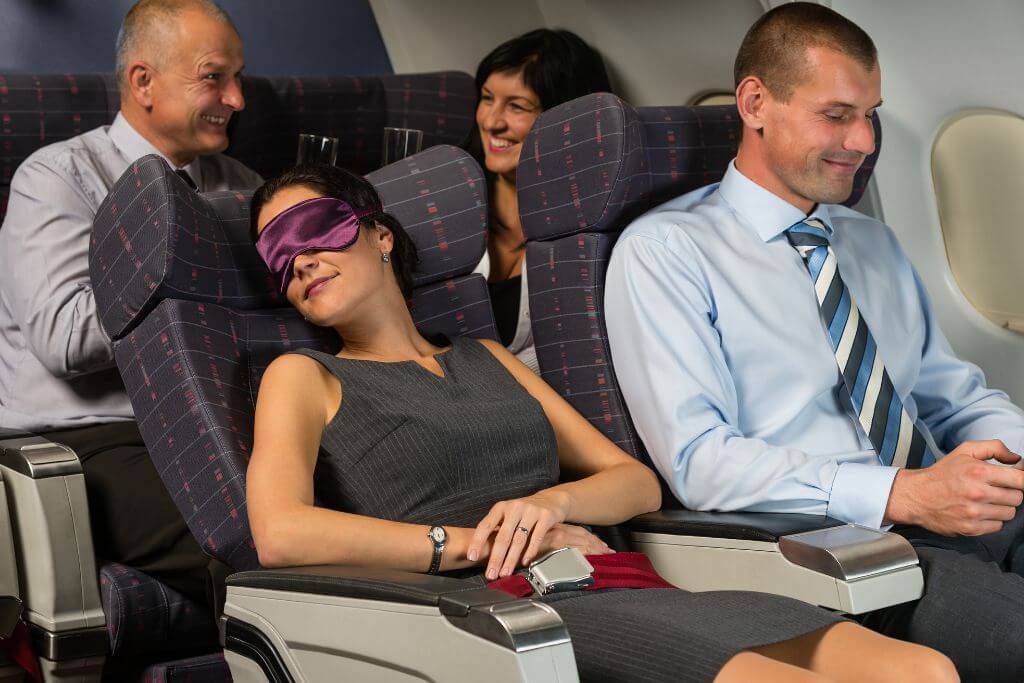
Tips For Sleeping On Long-Haul Flights Infographic
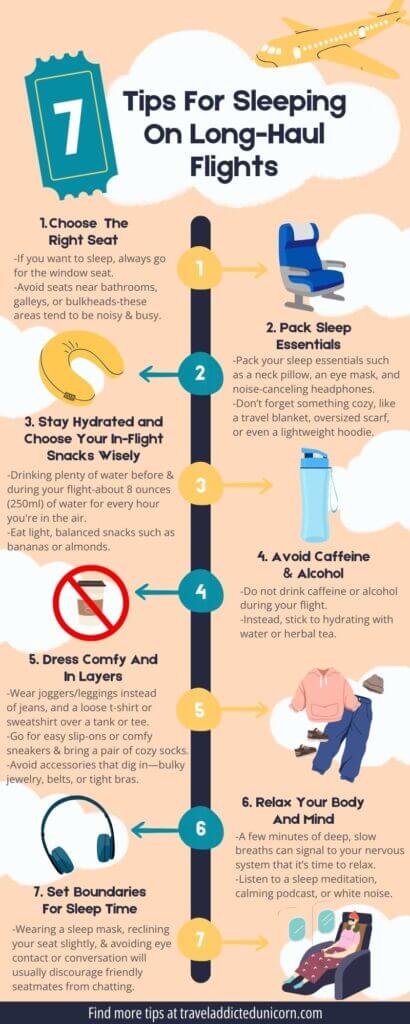
Wrap-Up: Tips For Sleeping On Long-Haul Flights
Getting quality sleep on a plane might seem impossible. However, with the right tips and a little preparation, it’s totally doable.
From choosing the best seat and dressing in cozy layers to hydrating smartly and setting clear boundaries for rest, these small changes can make a huge difference in how refreshed you feel when you land.
Whether you’re crossing time zones or just trying to squeeze in a quick nap mid-flight, a well-rested traveler is a happier traveler.
So next time you take off, try putting a few (or all!) of these tips into practice.
You might just wake up feeling like you never left your bed—okay, maybe not quite that good, but pretty close!


